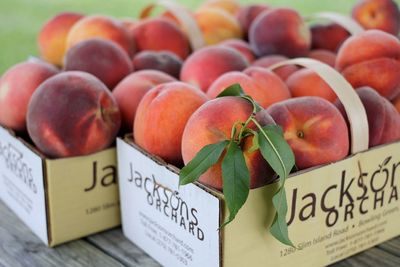Messina Peach Information
Messina peaches were introduced by the New Jersey Agricultural Experiment Station at Rutgers University. Messina peach trees have earned good reviews for a vigorous growth habit and low susceptibility to bacterial leaf spot. Look for Messina peaches to ripen between mid July and mid August, depending on climate.
Messina Peach Care
Messina trees are self-pollinating. However, a pollinator in close proximity may result in a larger crop. Choose a variety that, like Messina peach, blooms relatively early. Plant this peach tree where it will receive at least six to eight hours of full sunlight per day. Avoid locations with heavy clay, as growing Messina peaches require well-drained soil. Peach trees may also struggle in sandy, fast-draining conditions. Before planting, amend the soil with generous amounts of well-rotted manure, dry leaves, grass clippings, or compost. Don’t add fertilizer to the planting hole. Once established, Messina peach trees generally don’t need much supplemental irrigation if you receive regular rainfall. If weather is hot and dry, give the tree a thorough soaking every seven to ten days. Fertilize Messina when the tree begins bearing fruit. Until that time, well-rotted manure or compost is sufficient unless your soil is very poor. Feed the peach trees in early spring using a peach tree or orchard fertilizer. Never fertilize peach trees after July 1st, as a flush of new growth is susceptible to winter freezes. Pruning Messina peach trees is most effective when the tree is dormant, otherwise, you may weaken the tree. However, you can trim lightly during the summer to tidy up the tree. Remove suckers as they appear, as they draw moisture and nutrients from the tree.
